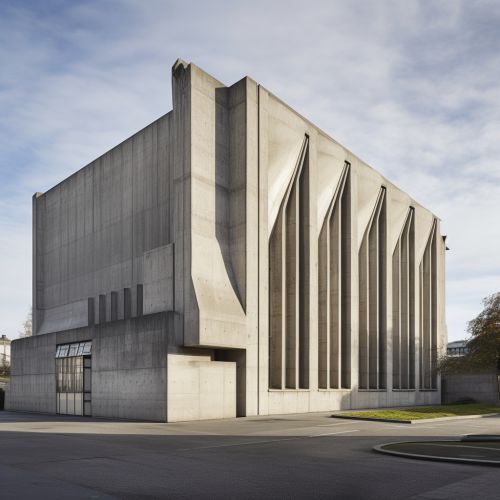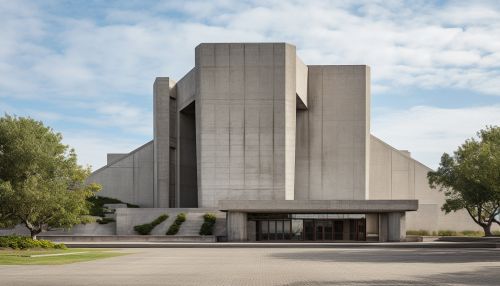Brutalism
Overview
Brutalism is an architectural style that emerged in the mid-20th century and gained popularity in the 1960s and 1970s. It is characterized by its raw, unadorned use of concrete, and its massive, block-like structures. Brutalism was often employed in institutional buildings, such as government offices, universities, and public housing projects. Despite its name, which is derived from the French term for raw concrete, "béton brut", Brutalism is not intended to be harsh or unfriendly. Instead, it is a reaction to the lightness, optimism, and frivolity of some 1950s and 1960s architecture.


History
The term "Brutalism" was first used in 1954 by British architects Alison and Peter Smithson for their design of a house in Soho, London. The term was later popularized by the architectural critic Reyner Banham in his 1966 book, "The New Brutalism: Ethic or Aesthetic?" The style was closely associated with the architectural philosophy of Le Corbusier, a Swiss-French architect who was one of the pioneers of modern architecture.
Brutalism became popular in the United Kingdom during the post-war period, as a way to create low-cost, functional buildings during a time of economic austerity. It was also seen as a way to create a new, modern identity for cities that had been heavily damaged during World War II. The style was also popular in Eastern Europe and the Soviet Union, where it was used as a symbol of the strength and permanence of the socialist state.
Characteristics
Brutalist architecture is characterized by its massive, monolithic forms, and its emphasis on raw, unadorned materials. The most common material used in Brutalist architecture is concrete, often left in its raw, unpolished state. This gives Brutalist buildings their characteristic rough, "brutal" appearance.
Brutalist buildings often have an asymmetrical, irregular layout, with an emphasis on verticality. They often feature repeating geometric shapes, and a lack of ornamentation or decoration. The interior spaces of Brutalist buildings are often as raw and unadorned as the exteriors, with exposed concrete walls and ceilings.
Criticism and Legacy
Brutalism has been a controversial style, with many critics considering it to be cold, inhuman, and unattractive. Critics argue that Brutalist buildings are often out of scale with their surroundings, and that their raw, unadorned concrete can appear unfinished or even ugly.
However, Brutalism has also been praised for its honesty, integrity, and its ability to express the raw power of architecture. Many Brutalist buildings have become iconic landmarks, and the style has had a lasting impact on modern architecture.
In recent years, there has been a resurgence of interest in Brutalism, with many Brutalist buildings being preserved and celebrated for their architectural significance. This has led to a reevaluation of Brutalism, with many now considering it to be an important and influential architectural style.
